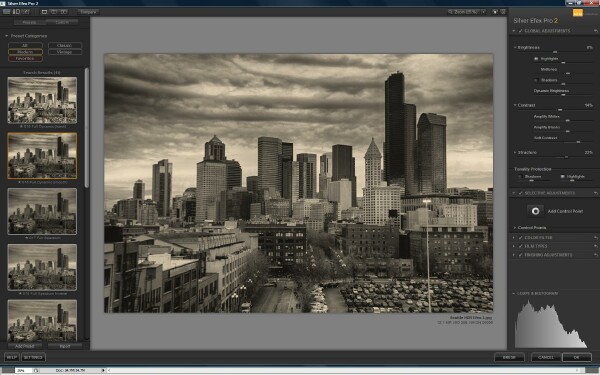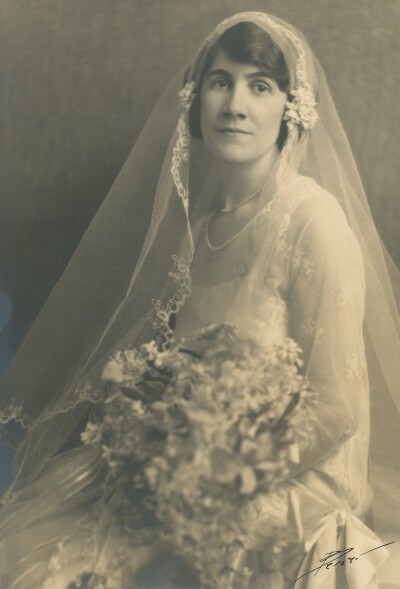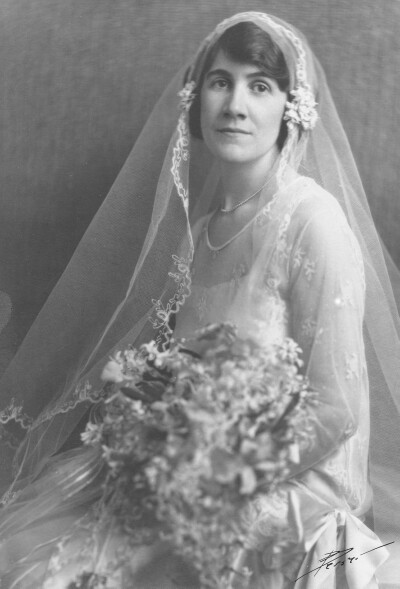Silver Efex Pro 2 vs Topaz B&W Effects: Which is Best B&W Photo Plugin?
Grab your copy of Topaz Black & White Effects 2 or Silver Efex Pro 2
My mom recently dumped a large box of black and white photos and negatives in my lap and suggested that I was now the official family archivist.
I’m now in charge of making sure that the family history (at least the generations before me) were photographically documented in digital form and could be shared and treasured within the family for generations to come. In short, a project that shouldn’t take me more than 20 or 30 years to complete.
There were hundreds if not thousands of images in all shapes, sizes and formats. Some were beautiful, pristine prints and some looked like they’d been run through the washing machine. Besides prints there were also hundreds of negatives, some of which have probably been obsolete since the 1920’s.
But there were also some incredible historical images, many dating back to near the turn of the 20th century that were certainly worth some time and effort to preserve. And since mom says it’s my job, well then, I guess it’s my job.
Wanting to concentrate more on the creative part of the process rather than the organization (I always have dessert first!), I decided to just jump in and try to identify the best program out there to make every image look as good as possible.
Having just reviewed Silver EFEX Pro 2 and being pretty impressed with it, I decided to do a side by side with Topaz B&W Effects 2. These are arguably the two top B & W programs out there and wanted to decide which would be best to spend my time with.
Working with B&W Originals in Silver Efex Pro 2 and Topaz B&W Effects
A couple things to keep in mind when you’re starting with black and white originals. Scan them in color even though they’re black and white.
Most of the popular b&w plug-ins, require the images to be done in RGB color. If you scan them as black and white grey scale the software won’t recognize them. If you already have grayscale scans and are using Photoshop as your front end you can cheat and convert them on the fly:
- Going to the Photoshop IMAGE pull down menu
- Go to MODE
- Select RGB Color
Keep in mind that certain tools will have limited to no effect if you’re starting with B&W images. For instance, color filters and color sensitivity draw information from the original color channels so will have minimal or no effect if you’re starting with B&W. When working with color originals (as I suppose most of you will be) there are various tools each plug-in uses that sample the original color information to make subtle tonal changes to the B&W processed image.
Silver Efex Pro 2 vs. Topaz B&W Effects: Layout and Similarities
In terms of the programs themselves, the basic work space is almost identical in both programs. Pre-sets to the left, Image preview center and adjustment tools to the right. Both have a wide range of presets although Topaz B&W Effects has a significantly larger collection than Silver Efex Pro 2. You can decide for yourself if that’s a good thing or just overkill.
Even though they’re labeled differently both have a similar toolset for most functions. You get all the standards for brightness, contrast, filters, film grain, highlight and shadow control, toning, vignettes, borders etc.
Each has their own unique processing algorithms that in a more detailed review may show technical strengths or weaknesses but we’re going to stay more “overview-ish” for now.
Silver EFEX Pro 2 Workspace:
Topaz B&W 2 Workspace:
Silver Efex Pro 2 vs. Topaz B&W Effects: Photo Examples
Back to my box of photos. I wanted to find an example of a shot that was fairly pristine but needed a little tweaking and see how each program handled it with an absolute minimum of fine tuning. Here’s my grandmother on her wedding day in raw scan form, already looking pretty good but I wanted a bit more contrast and a bit less sepia:
Here’s the same shot in Silver Efex Pro 2:
And in Topaz BW Effects 2:
Overall I’d have to give a slight edge to Silver Efex for hitting on my personal taste in the shortest amount of time.
A key thing to keep in mind with any of these programs is that you can spend hours creating hundreds of variations. More often than not it’s best to keep it simple. Figure out which works best for your taste and workflow and which gets you there the fastest and go with that.
Things I Like About Topaz B&W Effects:
There were quite a few features in Topaz that I really liked:
- GRID Preset Mode – One pre-set view mode is called GRID which gives you all the pre-sets side by side. Easier to compare different looks at a glance.
- Significantly more pre-sets for Color Toning ranges.
- Quick Toolset – In the upper right hand corner there are a set of Quick Tools for basic functions like brightness, contrast, burn, dodge, color filters undo, re-do, etc. This can be handy if you start with a pre-set that gets you most of the way there and only needs minor touch up. Sometimes getting into more or deeper menus can just get in the way of simple work
- Local Adjustments – This is a set of tools that allows you to use brushes to apply zone specific changes. Besides the degree of control I felt like I had, there were functions for burn and dodge, detail, smoothing, opacity, and hardness. There is also a variable edge aware tool that I thought worked really well for spot changes when you didn’t want to overlap effects into other parts of your shot. You can also selectively add color back in from your original shot.
- Undo – Topaz allows you to undo or reset individual adjustments without having to open the history tab.
Things I Like About Silver EFEX Pro 2:
Silver EFEX Pro 2 also had plenty to like:
- Modifying your work – Although it can be a little more trouble, you can go back through the history menu and re-start at any point along the way. If you apply 12 different effects that you aren’t happy with, just find that start point, highlight it and start over from there. Lots of flexibility with this approach.
- Options for comparing with original – There is a split screen preview mode that allows you to slide back and forth between your original image and your conversion. You can also single click to switch between the two.
- Original Color Frame – You can view the original color frame within Silver Efex Pro 2 by going to HISTORY, Highlight ORIGINAL then click COMPARE.
Silver Efex Pro 2 vs. Topaz B&W Effects: Brushes vs. Control Points
Here’s one area where the two programs take a completely different approach. When adjusting areas within a frame, Topaz BW Effects uses a more traditional brush tool while Silver Efex Pro uses what they call “Control Points”.
In Silver Efex, each control point has a variable size area which has sliders for size, brightness, contrast, “structure”, amplify whites, amplify blacks, fine structure and selective colorization. You can add as many control points as you want, copy them, group them together, and move them either individually or as a group.
Each control point also seems to be somewhat edge aware, although there is no control for this short of selecting a smaller zone. On the upside, you can create a control zone for large areas at one time and most of the major tools are right there in front of you. On the downside it may take several control points (or more) to work with a specific issue which can get a little tedious. That said, once you get the hang of it you can add and change points pretty quickly.
In Topaz I found the brush tool to be a little more intuitive for my taste and also had “darkroom” tools like burn and dodge which seem to be completely missing in Silver. In general, I just felt more in control of the process and particularly liked the variable edge aware control.
Adaptive Exposure vs. Structure and Faking HDR
Since this is a website primarily for HDR photography I wanted to do a little experiment in creating HDR-like effects without going through the whole HDR process.
Each program has its own version of providing localized detail and contrast for creating broader tonal ranges that could be used for, among other things, creating “faux HDR”.
The best way to create a black and white HDR (High Dynamic Range) image is to use proper HDR software like Photomatix then do your conversions to B&W. I was curious how good a job each did with their own tools to create “HDR-like” images; Topaz B&W Effects using it’s adaptive Exposure tool and Silver Efex Pro 2 using it’s Structure tool. The goal was to get that apparent dynamic range and create a feeling of more detail starting with a single color image. I also wanted to do it without spending hours and using primarily the controls I’ve just mentioned. Here are the results:
Topaz B&W Effects 2 “HDR”:
Silver Efex Pro 2 “HDR”
I actually thought I got a much quicker and more natural effect from Silver Efex using only the Structure slider and a slight adjustment to the mid-tones. Topaz certainly had more control sliders and it may be that if I spent more time I could have gotten a better result but with Silver Efex Pro I got 95% of the way there in about 10 seconds.
Silver Efex Pro 2 vs. Topaz B&W Effects: Final Thoughts
Both Topaz Black and White 2 and Silver EFEX Pro 2 are excellent tools, either of which should satisfy most photographers for both beginning and advanced black and white processing needs.
I tended to think that Topaz had a better toolset for my way of working and if I had to pick just one, I’d probably go that direction.
That being said, if you’re looking strictly for a black and white processing program and want to save a few bucks, Topaz is in the $60 range while Silver EFEX Pro is $150. Of course Silver EFEX Pro comes in a package with 5 other great photo programs for the price.
Grab your copy of Topaz Black & White Effects 2 or Silver Efex Pro 2






